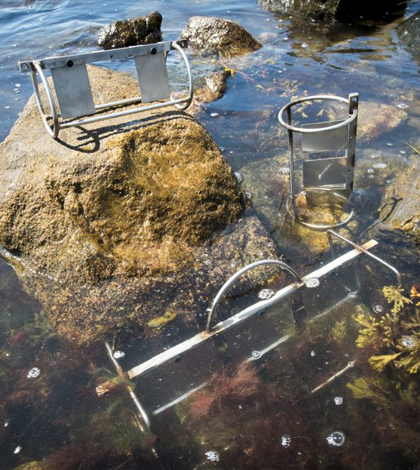New Passive Sampler Tracks Contaminant Levels At Low Cost

Passive sampling device for improved detection of toxic organic pollutants. (Credit: Sean Flynn / University of Connecticut)
Researchers at the University of Connecticut have developed a new device for measuring contaminant levels in water. The simple sensor is geared toward gathering measurements of toxic organic pollutants.
Unlike other similar sensors, the sampler does so passively. Just set it into the water body of interest and let it sample for a few hours. Screens at its center gather measurements throughout the deployment period.
After it’s removed, it takes a little over two hours to conduct a full analysis of the water’s target contaminant levels. Another important feature of the new technology is that it provides continuous sampling over time, which isn’t possible with grab sampling.
Since the device remains in the water, it gives a more representative picture of an aquatic environment’s overall health instead of the limited snapshot from grab sampling. It’s also fairly low cost, making it possible that a number of the semi-disposable passive samplers can be deployed at the same time over large areas.
The device currently measures a host of organic contaminants, such as industrial chemicals like polychlorinated biphenyls, pesticides, synthetic chemicals that mimic hormones and even munition compounds that find their way into bodies of water.
The investigators have already tested the technology in a variety of aquatic and sedimentary environments, both in the U.S. and internationally. Their next step is to commercialize it.
Top image: Passive sampling device for improved detection of toxic organic pollutants. (Credit: Sean Flynn / University of Connecticut)





0 comments